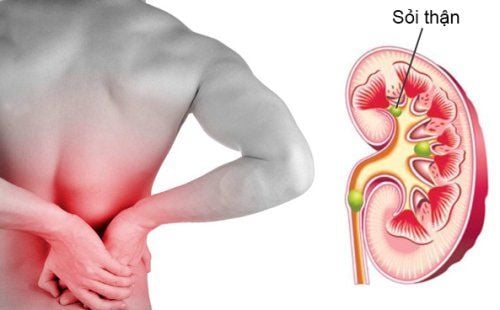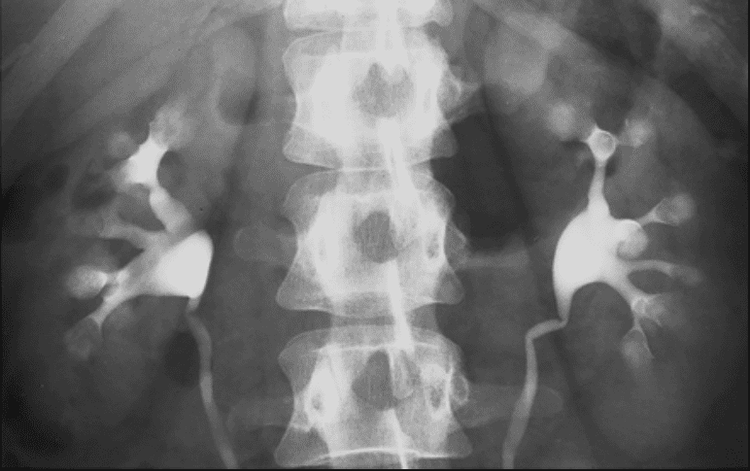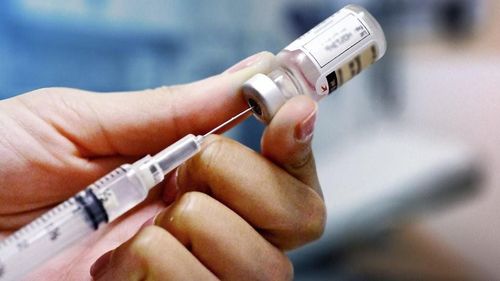This is an automatically translated article.
The article is professionally consulted by Master, Doctor Nguyen Thuc Vy - Doctor of Diagnostic Imaging - Department of Diagnostic Imaging - Vinmec Nha Trang International General Hospital.An intravenous contrast urogram is a diagnostic imaging technique that takes x-rays of the urinary system in combination with intravenous contrast to help doctors evaluate the kidneys, ureters, and bladder. patient.
1. Specify shooting
Intravenous drug nephrography is a technique that uses X-rays in combination with contrast material so that the doctor can see the anatomy of the kidneys, bladder and ureters. This technique is not used very often, instead, doctors will use other imaging techniques with less side effects such as CT scans.The doctor may order an intravenous pyelogram if the patient has symptoms such as blood in the urine or pain in the side or lower back. This technique allows doctors to detect blockages in the urinary tract caused by:
Kidney stones Enlargement of the prostate gland Tumors in the kidney, ureters or bladder Scars, surgery or urinary tract infections Congenital problems in the urinary tract Imaging from an intravenous drug nephrogram can provide a physician with sufficient information to develop a drug regimen for obstruction. Otherwise, the person may need surgery.

Người bệnh sỏi thận được chỉ định chụp thận thuốc tĩnh mạch
2. Contraindications
Patients should not perform high-dose intravenous drug nephrography if:The patient is allergic to iodine or contrast agents. The patient is pregnant or suspected of being pregnant because X-rays can affect the development of the fetus. Patients with severe renal failure.
3. Some common side effects
You may feel a sharp pain when the contrast medium is injected into your hand or arm. In addition, you may experience itching and redness as the contrast travels through your body, a salty or metallic taste in your mouth, a headache, or feeling nauseous. These side effects are common and usually go away within minutes. If the patient has kidney disease, the contrast medium can cause more severe kidney damage.In rare cases, the person may experience an allergic reaction. Persistent itching or hives. These side effects are easily treated with medication.

Người bệnh có thể gặp tình trạng dị ứng chất cản quang
4. How is the shooting process?
Before taking nephrography with intravenous drugsBefore taking nephrography with intravenous contrast, the doctor will ask and instruct the patient:
Are you allergic to anything, especially iodine ? Pregnant or suspected of being pregnant Have you ever had an allergic reaction to contrast medium? The patient may need to avoid eating and drinking for a certain period of time before the contrast agent is injected. In addition, the doctor also recommends taking a laxative the night before yesterday's scan. At the Medical facility, another member of the Medical team conducting the scan will:
Ask some questions about medical history Check blood pressure, pulse and body temperature Ask the patient to take off hospital gowns and dressings; Remove jewelry, eyeglasses, and any metal objects that may obscure the X-ray image Establish an intravenous line in the arm to introduce contrast material into the body Ask the patient to urinate and Go until your bladder is empty During high-dose intravenous nephrography
For intravenous contrast nephrography, the patient lies supine on the examination table. The X-ray machine is usually attached partially or completely to the board. The X-ray image intensifier will be placed on the patient's abdomen. After the patient is comfortably lying on the table, the doctor will begin to perform the following steps:
Take X-ray of the urinary tract before injecting contrast. Initiate intravenous contrast injection. With a dose of about 1ml-1.5ml of contrast agent/kg body weight. X-rays are taken according to the timelines that include (1) the contrast agent going to the kidney and then to (2) the ureter and (3) emptying into the bladder. When the scan is complete, the patient is asked to urinate again. Then, the patient returns to the examination table for the doctor to take an X-ray while the bladder is empty.

Kết quả chụp thận có sử dụng thuốc cản quang
When the intravenous contrast nephrography is complete, the IV line in the arm will be withdrawn. Vinmec International General Hospital is one of the hospitals that not only ensures professional quality with a team of leading doctors, modern equipment and technology, but also stands out for its examination and consulting services. and comprehensive, professional medical treatment; civilized, polite, safe and sterile medical examination and treatment space. Customers when choosing to perform tests here can be completely assured of the accuracy of test results.
Master. Doctor Nguyen Thuc Vy has 09 years of experience in Diagnostic Imaging. Dr. Vy has many years of experience working in the Department of Diagnostic Imaging at the University of Medicine and Pharmacy Hospital in Ho Chi Minh City, trained and attended many courses on specialized imaging at the University of Medicine and Pharmacy Hospital. Hue Pharmacy, Ho Chi Minh City University of Medicine and Pharmacy, Cho Ray Hospital. Currently working at the Diagnostic Imaging Department of Vinmec Nha Trang International General Hospital
Customers can directly go to Vinmec health systems nationwide to visit or contact the hotline here for support.














